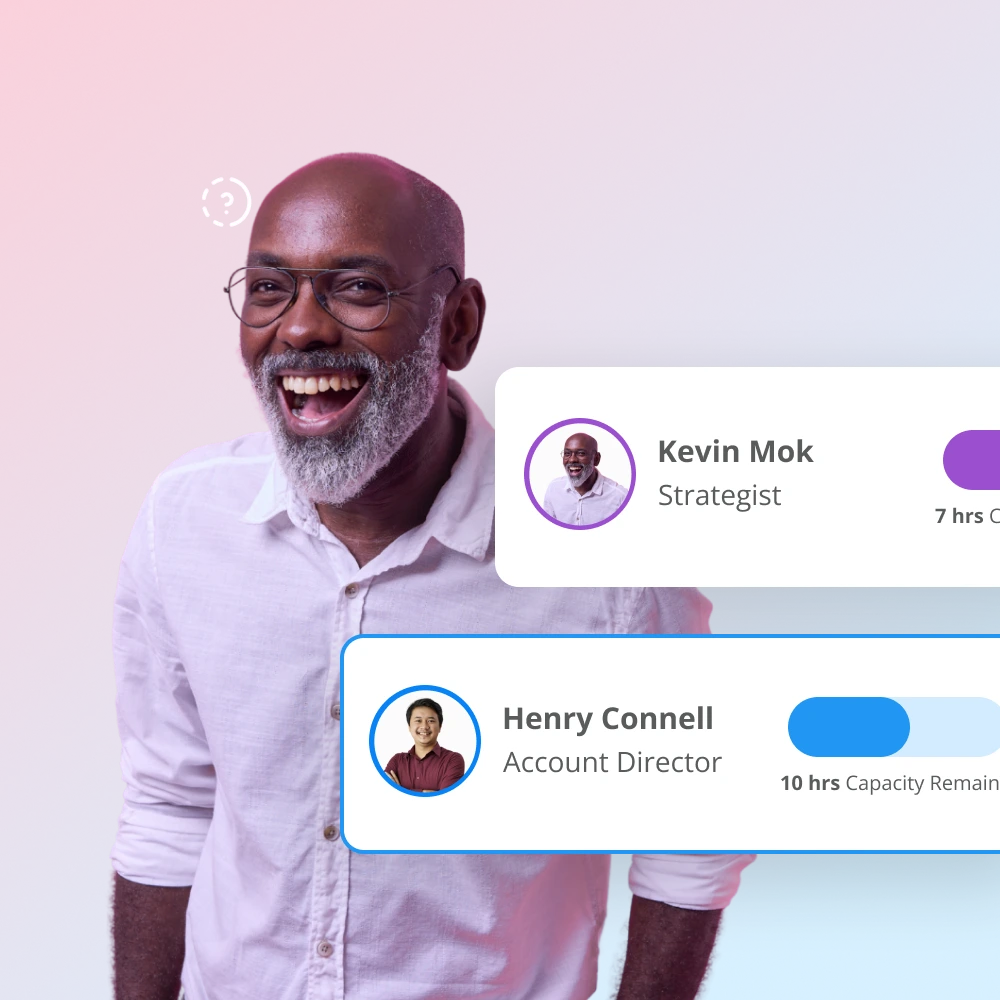Table of contents
Subscribe to our newsletter
Thank you! Your submission has been received!
Oops! Something went wrong while submitting the form.


Creative excellence relies on more than talent - it depends directly on the systems behind it.
As agencies grow, the same delivery habits that once worked start to fail. The scrappy systems that held up at five people crack under the weight of a 25-person team. By 50, you’re firefighting.
Operational strategy is how you scale without losing control. When systems are clear, teams move faster, projects run smoother, and issues don’t fall through the cracks.
This guide is a strategic playbook designed to help agency leaders, COO’s project managers - or anyone leading delivery in an agency – scale intelligently while protecting the quality of creative output and commercial viability.
Operational strategy shouldn’t sit in a deck. It should show up in the way your agency plans, delivers, and protects margin, each and every day.
The strategies below are used by high-performing teams to simplify delivery, improve visibility, and unlock profitability at scale.
Most agencies think they have operations because they’ve documented a kickoff checklist or implemented a PM tool. But process ≠ operations.
Operational architecture includes everything from how work is scoped, assigned, tracked, escalated, reported, and optimised - across every team and phase of delivery.
Build your operations in four strategic layers:
1. Cadence (Your Rhythm)
Too many teams lead with tooling. Instead, define the architecture then choose tools like Magnetic that align to these layers.
Time tracking is often treated as a compliance task. But smart agencies use it as a real-time operational signal that helps support better decision making.
Go deeper than hours:
✔️ Earned Value: Tracks whether your logged hours are producing planned outcomes.
Example: You’ve logged 80% of scoped hours but only completed 40% of the project. That’s a problem.
✔️ Scope Drift: Monitors time spent vs. estimate per project phase.
Example: Design was scoped for 30 hours, but you're at 46 and not done? That’s effort drift.

✔️ Realisation Rate: How much of scoped/billable time was actually invoiced? Low realisation = margin leakage.
Magnetic automates this visibility by connecting hours logged to milestones, scope, and budget in real time.
Pro tip: Don’t just track what’s happened. Use real-time data to spot problems while they’re unfolding not after delivery when problems have likely already compounded.
Many agencies think finance owns commercial performance. But too often, by the time finance sees the numbers, the damage has already been done.
Top-performing agencies empower their operations teams to own the commercial layer during delivery, not as an after-thought.
What great ops teams track weekly:
Magnetic ties time, delivery stage, and budget burn together so you can see margin in real-time not just at month end.
Most agencies reschedule reactively usually when a designer burns out or a strategist is pulled in five directions.
Smart ops teams forecast capacity 2–6 weeks in advance and model multiple scenarios.
How to do it right:
Magnetic’s resource planning tools make it easy to assign the right people based on role, skills, and real-time capacity. The visual team scheduler helps you balance workloads across weeks. so you plan ahead without overbooking or guesswork.
Weekly status meetings often rehash the obvious tasks done, deadlines met, what’s coming.
Instead, structure your ops rituals around leading indicators that uncover risk early.
Use a reporting stack that includes:
Magnetic’s live reporting and dashboards capabilities are built specifically to support these conversations , without needing to manually pull information from multiple systems of spreadsheets.
Tip: Rituals matter more than tools. Use the same dashboard every week and look for patterns not just one-off delays.
Agency teams spend countless hours on work that doesn’t create value:

Automate all of it.
With Magnetic, you can create workflow rules that power these automations, so your team focuses on delivery, not digital paper trails.
Agency operations isn’t the opposite of creativity. It’s the structure that protects it.
When your operations are built with foresight, backed by data, and streamlined through the right system:
If you’re serious about scaling, profitability, and reputation operational strategy is the investment you can’t afford to skip.
And if you're looking for a system to help you, do it? Magnetic brings your delivery, resourcing, time, and reporting into one connected platform - built for agencies that want clarity, control, and profit-focused delivery. 👉 Book a demo or start your free 14-day trial today.
A structured approach to managing how work is delivered - from planning and time tracking to resourcing, reporting, and financial oversight. The goal is to make delivery predictable, scalable, and profitable.
.svg)
Treating ops as admin instead of strategic | Using disconnected tools across teams | Planning resourcing week-to-week instead of forward | Focusing only on task progress, not effort, margin, or scope drift
.svg)
Magnetic is an agency operating system that replaces spreadsheets, time tools, resourcing boards, and static reports. It connects delivery, commercial data, and team capacity in one system.
.svg)
Not at all. Smaller agencies benefit even more, because every hour saved and every margin point recovered has a bigger impact when the headcount is lean.
.svg)
Higher project margins | Fewer missed deadlines | Lower team burnout | Better client satisfaction | Better decision-making with live visibility
.svg)
There are usually warning signs even in successful teams. Look for: Constant resourcing conflicts or burnout | Projects delivered on time but with poor margins | Inconsistent client experience across teams | Difficulty forecasting capacity or revenue | Reliance on multiple disconnected tools to get a clear picture. If you're regularly reacting instead of planning, it’s a sign your operations need rethinking.